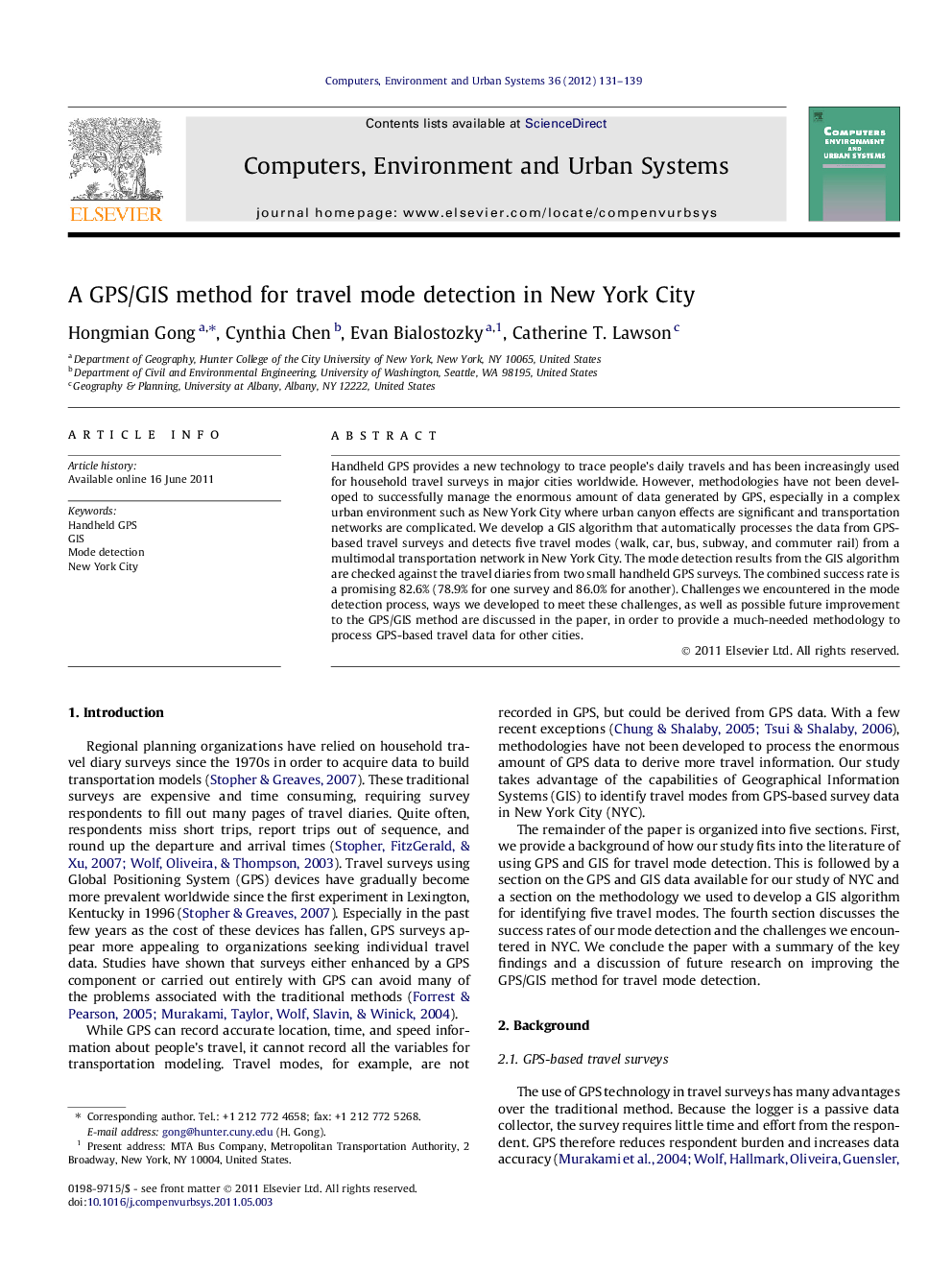| Article ID | Journal | Published Year | Pages | File Type |
|---|---|---|---|---|
| 506437 | Computers, Environment and Urban Systems | 2012 | 9 Pages |
Handheld GPS provides a new technology to trace people’s daily travels and has been increasingly used for household travel surveys in major cities worldwide. However, methodologies have not been developed to successfully manage the enormous amount of data generated by GPS, especially in a complex urban environment such as New York City where urban canyon effects are significant and transportation networks are complicated. We develop a GIS algorithm that automatically processes the data from GPS-based travel surveys and detects five travel modes (walk, car, bus, subway, and commuter rail) from a multimodal transportation network in New York City. The mode detection results from the GIS algorithm are checked against the travel diaries from two small handheld GPS surveys. The combined success rate is a promising 82.6% (78.9% for one survey and 86.0% for another). Challenges we encountered in the mode detection process, ways we developed to meet these challenges, as well as possible future improvement to the GPS/GIS method are discussed in the paper, in order to provide a much-needed methodology to process GPS-based travel data for other cities.
► A GIS algorithm is developed to detect five travel modes from GPS data. ► The overall success rate for mode detection is a promising 82.6%. ► Over half of the trip segments in our surveys are walk, of which 92.4% is successfully identified. ► Building a multimodal transportation network in GIS helps the mode detection.
